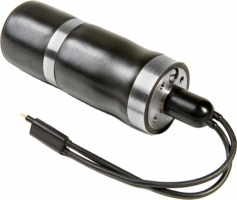Hydroacoustic sensor network


The hydroacoustic network can be used for: locating and tracking sound sources in the ocean including whales, dolphins, environmental noise and acoustic noise due to ocean-atmosphere interaction.
The hydroacoustic network comprises: A set of ten RS-ORCA72D high specification underwater acoustic data recorder and signal processors capable of supporting multiple input channels. Each ORCA72D recorder is capable of supporting 5 synchronously sampled hydrophone inputs with flexible sampling rates ranging from 1500 Hz to 384 kHz. We have 10 broadband and 10 medium to high frequency hydrophones for use with these recorders.
A pool of 10 broadband acoustic hydrophones, with the following possible applications:
- study of ocean wave generated continuous background seismic noise, called microseisms (applications: seismic imagery and marine resource mapping, sea floor stability, ocean wave climate studies, wave energy potential estimation)
- studying the migration patterns of baleen whales due to their low frequency calls which can range up to 200km.
A set of 10 medium to high frequency hydrophones, with the following possible applications:
- Suitable for wildlife studies, eg. monitoring whale and dolphin vocalisations covering lower frequency calls of fin and blue whales (approx. 10Hz to 31kHz)
- studying the sources and effects of marine noise pollution.

HTI-04-PCA/ULF Broadband Hydrophone
Additional specifications & Technical data
The hydroacoustic network comprises:
- ORCA72D multi-channel passive acoustic recorders are
- Depth rated to 3000m (crush depth 4500m)
- Can support multiple input channels
- Flexible sampling rates from 1500Hz to 384kHz
- 10x HTI-04-PCA/ULF Broadband Hydrophones
- Depth rated to 6000m
- Bandwidth from 0.01 Hz to 8 kHz
- Sensitivity -194dB
- 10x GTI-M14-600 Medium/High frequency Hydrophones

GTI-M14-600 Medium/High frequency Hydrophone
- Depth rated to 6000m
- Bandwidth from 2Hz to 50kHz
- Sensitivity -165dB




